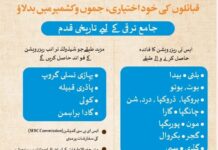Unemployment remained high in eight regions despite the national, urban and rural rates going down in November sequentially.Joblessness continued to be very sticky in Rajasthan (20.4%), Jammu and Kashmir (21.4%) and Haryana (29.3%) according to Centre for Monitoring Indian Economy (CMIE).These regions have been suffering high unemployment for several months.Bihar, Goa, Tripura, Himachal Pradesh, and Jharkhand reported double-digit unemployment rates with the first three rising sequentially.In Bihar, unemployment went from 13.9% to 14.8%. In Tripura, joblessness climbed 3.5 percentage points to 13.4%. In Goa, it rose one percentage point to 12.7%.Meanwhile, the national rate went down from 7.75% in October to 7% in November. And rural unemployment slid from 7.91% to 6.44%. The urban rate was 8.21% in November as against 7.38% the month before.High unemployment in eight regions can be broadly blamed on delayed economic recovery, sectoral softness, surplus workforce, and a dull agriculture season in November.“If you look at regions like Goa, Rajasthan, Himachal, and Jammu and Kashmir, you would realise that tourism and hospitality are good job creators there. The recovery in these sectors is far behind expectations due to the lingering fear over the pandemic,” said Arup Mitra, a professor of economics at Delhi University.Besides manufacturing is still not operating to full capacity and some parts have adopted more technology in the past one and a half years, automating workers out of existence, Mitra explained.This must have dented states with industries like Haryana, he added.“One big factor behind softness in demand is the informal sector. Bihar and Jharkhand may have suffered due to this . Besides, November is also a bit dull on the agricultural front. Put it all together, and you will realise that full recovery in the larger labour market is still far,” Mitra said.According to CMIE, labour participation has gone down from nearly 43% before the first wave of Covid to about 36%.
Home Jammu Kashmir Unemployment remains high in eight regions, very sticky in Haryana, Rajasthan, J&K





